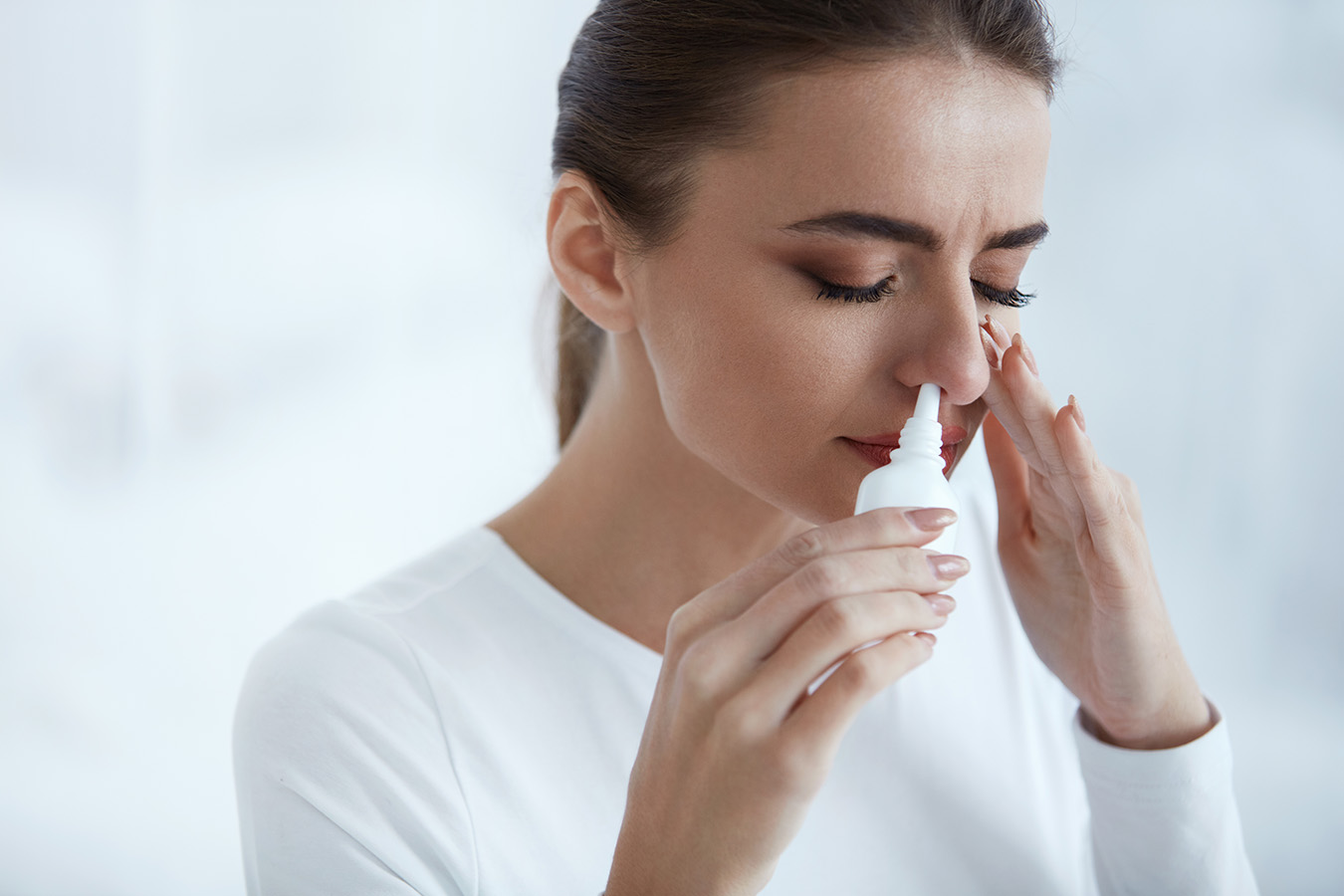New Relief for Chronic Dry Eyes

If you have chronic dry eyes, you are probably all too familiar with lubricating eye drops. If you use drops multiple times throughout the day, it can cause red, itchy, sensitive eyes. Some dry eye sufferers even experience a rebound effect that worsens symptoms with continued use.
A new and innovative treatment for dry eye disease is now available.
In October 2021, the FDA approved Tyrvaya (a varenicline solution), the only nasal spray of its kind.
Rather than waiting for your eyes to feel dry and itchy, this prescription medication is sprayed up the nose twice daily (every 12 hours) to help produce enough tears. This is a welcome option for those who don’t well tolerate lubricating eye drops.
The varenicline nasal solution should be helpful for some individuals with chronic dry eye disease.
“Dry eye is an umbrella term that includes multiple subtypes. We cannot always identify the root cause of dry eye in each patient,” says Anat Galor, M.D., a cornea specialist with Bascom Palmer Eye Institute.
“Dry eye is common, and many medical conditions and medications can trigger it. It is nice to have a new medication in our armamentarium to combat dry eye. The next step is to figure out which individuals will respond best to varenicline nasal solution.”
When Tyrvaya is effective, patients feel relief by experiencing an increase in their tear production and natural tear response.
It is potentially helpful for all qualifying patients. “But in clinical practice, we need to find out who responds best to this type of therapy,” Dr. Galor says.
“Some may do well with this product on its own, while others will find they still need eye drops. The nasal spray works by stimulating neural networks, so your lacrimal glands must have the ability to produce tears for this medication to have an effect.”
This novel treatment may not be effective for some, including people with dry eyes due to diabetes, problems with the lacrimal glands, inadequate tear production, and dysfunctional tears.
“Fortunately, we have a number of options for treating dry eye disease that can be used in isolation or combination,” Dr. Galor says. Those with an autoimmune disease, for example, often require anti-inflammatory eye drops, in addition to other therapies.
This new medication should not be prescribed to anyone with significant nasal anatomy abnormalities or any structural blockage in the nose.
Are there any side effects to the nasal spray for dry eyes?
People may experience minor side effects, including sneezing, coughing, and nose or throat irritation. “The side effect profile seems reasonable,” says Dr. Galor.
“You can minimize side effects by adjusting the direction of the spray so that it hits the anterior part of the nose, and avoid them if you stop using the medication for a day or so.
“Some patients will be more comfortable using a nasal spray than others. Others may continue to use eye drops instead. And some will find that using these strategies in combination will give them the most relief of their dry eye symptoms.”
If you’re living with chronic dry eyes and want to try a new treatment, speak with an ophthalmologist to learn if you’re a candidate for a varenicline nasal solution.
Your doctor may also recommend non-pharmaceutical options such as using a humidifier, drinking plenty of water, and taking frequent visual breaks from work and screen time.
Dana Kantrowitz is a contributing writer for UMiami Health News.
Tags: Bascom Palmer Eye Institute, Dr. Anat Galor, dry eye, dry eye syndrome, eye relief
